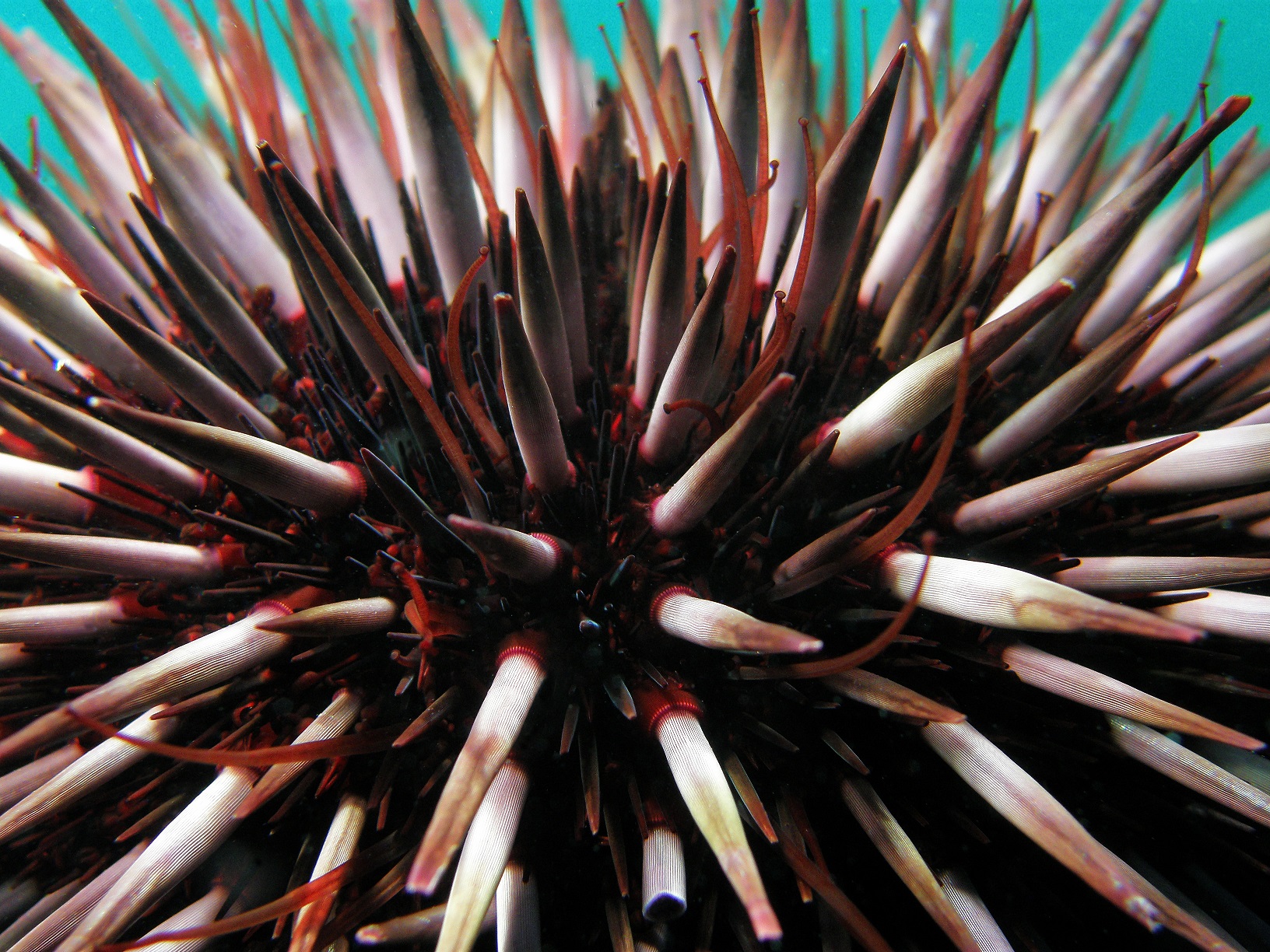Biology
The shortspined sea urchin is endemic to Australia and distributed along protected or moderate energy rocky reefs, sandy mudflats and seagrass beds in temperate and sub-tropical waters from Western Australia to New South Wales and around Tasmania (Kailola et al. 1993; Keesing, 2013). In Tasmania the shortspined sea urchin can be found in shallow waters <20m in bays and estuaries but is not commonly observed in exposed sites along the southern and south-west coasts of Tasmania that are dominated by bull kelp habitat (Keesing, 2013). Shortspined sea urchins have a hard shell (test) surrounding the soft tissue (such as the dermis, podia, pedicellariae, and gonads), pointed primary spines (10-25 mm in length) and blunt secondary spines (Kailola et al. 1993). The colour of shortspined sea urchin vary from white, violet, green or violet and green on the spines and test and white, dark red or pink on the dermis (Growns and Ritz, 1994).

Asynchronous spawning by the shortspined sea urchin occurs between December and March triggered by warmer sea temperatures (Kailola et al. 1993). The likelihood of successful fertilisation of eggs is dependent on proximity of spawning females to males with <50% success estimated at a distance of 1 m and 7% with 10 m separation and larvae remain planktonic for 3 – 5 days (Keesing, 2013; Kailola et al. 1993). Larval settlement and metamorphosis is triggered by bacterial films that are associated with coralline turf algae (Keesing, 2013).
Sea urchin barrens, areas of low productivity and biodiversity, are a common occurrence on shallow reefs in Tasmania which can be maintained by relatively low densities (<10/m2) of urchins and form critical habitat for the establishment of the introduced macroalgae Undaria pinnatifida (Japanese seaweed) sporophytes (Valentine and Johnson, 2005). In a study by Pederson and Johnson (2007), the size-at-age and age frequency distributions of shortspined sea urchins inhabiting native seagrass beds and those on Undaria pinnatifida dominated barrens were not significantly different. Predation pressure by octopus species, southern rock lobsters, leatherjackets, snapper and Pacific gulls may be an important mechanism for regulating urchin populations (Kailola et al. 1993). A field study conducted in a marine research found rock lobsters to be more important than fish as predators of adult sea urchins and a potentially important source of mortality in shortspined sea urchin populations (Pederson and Johnson 2006). A 30 month study of the reestablishment of native macroalgae on barrens after the removal of sea urchins failed to detect a recovery even with the removal of Undaria pinnatifida sporophytes (Valentine and Johnson, 2005).



